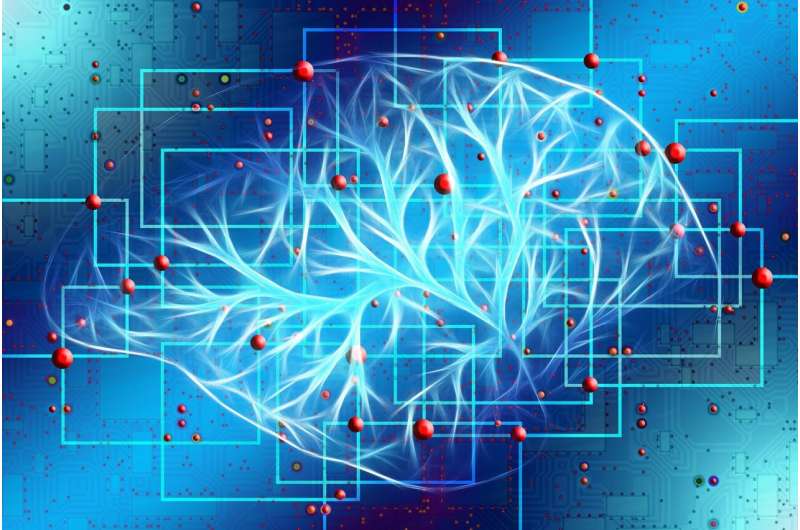This article has been reviewed according to Science X's editorial process and policies. Editors have highlighted the following attributes while ensuring the content's credibility:
fact-checked
peer-reviewed publication
trusted source
proofread
Investigators identify a group of cells involved in working memory

Cedars-Sinai investigators have discovered how brain cells responsible for working memory—the type required to remember a phone number long enough to dial it—coordinate intentional focus and short-term storage of information. The study detailing their discovery was published in Nature.
"We have identified for the first time a group of neurons, influenced by two types of brain waves, that coordinate cognitive control and the storage of sensory information in working memory," said Jonathan Daume, Ph.D., a postdoctoral scholar in the Rutishauser Lab at Cedars-Sinai and first author of the study. "These neurons don't contain or store information, but are crucial to the storage of short-term memories."
Working memory, which requires the brain to store information for only seconds, is fragile and requires continued focus to be maintained, said Ueli Rutishauser, Ph.D., director of the Center for Neural Science and Medicine at Cedars-Sinai and senior author of the study. It can be affected by different diseases and conditions.
"In disorders such as Alzheimer's disease or attention-deficit hyperactivity disorder, it is often not memory storage, but rather the ability to focus on and retain a memory once it is formed that is the problem," said Rutishauser, who is a professor of Neurosurgery, Neurology and Biomedical Sciences at Cedars-Sinai.
"We believe that understanding the control aspect of working memory will be fundamental for developing new treatments for these and other neurological conditions."
To explore how working memory functions, investigators recorded the brain activity of 36 hospitalized patients who had electrodes surgically implanted in their brains as part of a procedure to diagnose epilepsy. The team recorded the activity of individual brain cells and brain waves while the patients performed a task that required use of working memory.
On a computer screen, patients were shown either a single photo or a series of three photos of various people, animals, objects or landscapes. Next, the screen went blank for just under three seconds, requiring patients to remember the photos they just saw. They were then shown another photo and asked to decide whether it was the one (or one of the three) they had seen before.
When patients performing the working memory task were able to respond quickly and accurately, investigators noted the firing of two groups of neurons: "category" neurons that fire in response to one of the categories shown in the photos, such as animals, and "phase-amplitude coupling," or PAC, neurons.
PAC neurons, newly identified in this study, don't hold any content, but use a process called phase-amplitude coupling to ensure the category neurons focus and store the content they have acquired.
PAC neurons fire in time with the brain's theta waves, which are associated with focus and control, as well as to gamma waves, which are linked to information processing. This allows them to coordinate their activity with category neurons, which also fire in time to the brain's gamma waves, enhancing patients' ability to recall information stored in working memory.
"Imagine when the patient sees a photo of a dog, their category neurons start firing 'dog, dog, dog' while the PAC neurons are firing 'focus/remember,'" Rutishauser said.
"Through phase-amplitude coupling, the two groups of neurons create a harmony superimposing their messages, resulting in 'remember dog.' It is a situation where the whole is greater than the sum of its parts, like hearing the musicians in an orchestra play together. The conductor, much like the PAC neurons, coordinates the various players to act in harmony."
PAC neurons do this work in the hippocampus, a part of the brain that has long been known to be important for long-term memory. This study offers the first confirmation that the hippocampus also plays a role in controlling working memory, Rutishauser said.
This study was conducted as part of a multi-institutional consortium. The data in this study is pooled across Cedars-Sinai, the University of Toronto, and the Johns Hopkins School of Medicine, resulting in a statistically powerful study that a single institution could not accumulate on its own given the difficulty of these experiments.
More information: Ueli Rutishauser, Control of working memory by phase–amplitude coupling of human hippocampal neurons, Nature (2024). DOI: 10.1038/s41586-024-07309-z. www.nature.com/articles/s41586-024-07309-z




















